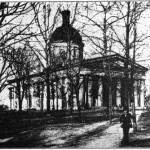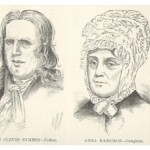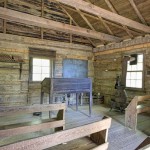In its infancy, the Hoosier state demonstrated a decided progressiveness with regard to its deaf citizens. Though faced with fiscal crisis, the legislature decided in 1843 to levy a property tax, the proceeds of which would go to fund a school for deaf children. The state also gave a 200-dollar award to James McLean, a deaf teacher from New York whose efforts to establish such a school in Parke County had drawn the state’s attention to the matter. Later that year William Willard, who had been teaching at the Ohio School for the Deaf in Columbus, received the state’s backing to establish his own school. The teacher had been educated at the nation’s first institution for the deaf, founded in Hartford, Connecticut in 1817. There, Willard had encountered the teachings of founder Laurent Clerc. The Frenchman, known as “The Father of Deaf Education” in the U.S., espoused the use of sign language to provide instruction.
In the summer of 1843, Willard rode all over Indiana on horseback to publicize his new school. The Willard School enrolled twelve students when it opened that fall in Indianapolis. Willard and his wife, Eliza Young Willard–who was also deaf–undertook the instruction and general care of their students. Later that year, the school became a state institution. What came to be known as the Indiana Asylum for the Education of the Deaf and Dumb was the sixth school of its kind in the nation, and the first to offer a free education to deaf students. Students ranged in age from ten to thirty, and their education included instruction in a trade. After occupying a series of rented facilities in downtown Indianapolis and increasing its student body to around 100, the school moved into newly constructed quarters on the city’s east side in 1850.
By the turn of the century, the school graduated to a new campus, located on 80 acres on the north side. The East 42 nd Street facility opened in 1911, after a great deal of public debate about its cost. The school’s grand neoclassical structures were designed by the fashionable Indianapolis architectural firm of Rubush and Hunter–whose eclectic touch is still evident in such buildings as the Indianapolis Repertory Theatre and the Murat Centre. The campus of what is now known as the Indiana School for the Deaf was listed on the National Register of Historic Places in 1991. Nonetheless, one of buildings was demolished in 2002, and another has been named one of Indiana ‘s “10 Most Endangered” historic landmarks.
For more information:






















